SPECIAL REPORT | Swinging his machete with an economy of movement that only the jungle can teach, Matakin Bondien lopped a stray branch from the path of his boat. He hopped barefoot from the prow, climbed a muddy slope and stared once more at what he'd lost.
Not long ago, the clearing had been home to mangroves, saltwater-loving trees that anchor a web of life stretching from fish larvae hatching in the cradle of their underwater roots to the hornbills squawking at their crown. Now the trees' benevolent presence was gone, in their place a swath of stripped soil littered with felled trunks as gray as fossils.
"Do you think we can find any food in this place now?" asked Bondien, a village leader of the Tombonuo people. "The company thinks it can do anything it wants - that we don't count."
The company is Sunlight Inno Seafood. Owned by Cedric Wong King Ti, a Malaysian businessman known as "King Wong," it has bulldozed swaths of mangroves in the Tombonuo's homeland in northern Borneo to make space for plastic-lined ponds filled with millions of king prawns. The shrimp are destined to be fattened for three months, scooped up in nets, quick frozen, packed into 40-foot refrigerated containers and loaded onto cargo ships bound for distant ports.
Gargantuan as it may seem to Bondien and his relatives, the project represents only a speck in the global aquaculture industry, one of the world's fastest-growing sources of protein. Unfolding across Asia and around the world, this revolution in farming could help mitigate the impacts of climate change - or make them even worse.
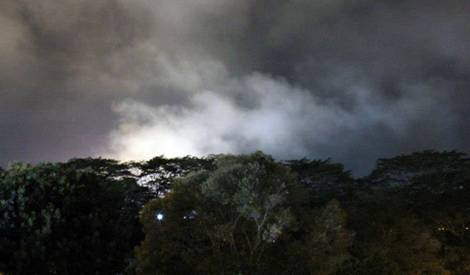
As the buildup of heat-trapping greenhouse gases causes the world's oceans to warm, ecosystems that formed hundreds of thousands of years ago are being upended in less than a human lifespan. Across the planet, fish and other marine creatures are being forced into a desperate search for cooler waters. Even coral is on the move: Some Japanese reefs are expanding northward at up to nearly nine miles per year, researchers have found.
Tropical seas may be the hardest hit. Species in the once-stable conditions near the Equator could find it much harder to tolerate even mild temperature increases than hardier cousins at higher latitudes, which are used to coping with the contrast between summer and winter.
"If you ask me what is the No 1 concern that I have on climate change effects on fisheries, it is on these tropical, developing countries," said William Cheung, director of science at the Nippon Foundation-University of British Columbia Nereus Programme. "The sheer speed of the change will make it that much harder for marine life to adapt."
Coral reefs, as vital to tropical fish as trees are to birds, are becoming more vulnerable to a process called "bleaching," which occurs when a spike in water temperatures causes coral to expel the algae that provide their kaleidoscope colours, leaving them prone to starvation or disease. Today, swaths of the once-psychedelic Great Barrier Reef in Australia have turned boneyard white and largely devoid of life.
Scientists fear a similar fate could await the Coral Triangle, a huge underwater wonderland east of Borneo endowed with a trove of biodiversity comparable to the rainforests of the Amazon Basin. Millions of people depend on its bounty to survive, a large share of them Malaysians, who eat an average of 57kg of fish each a year - more than double the world average.
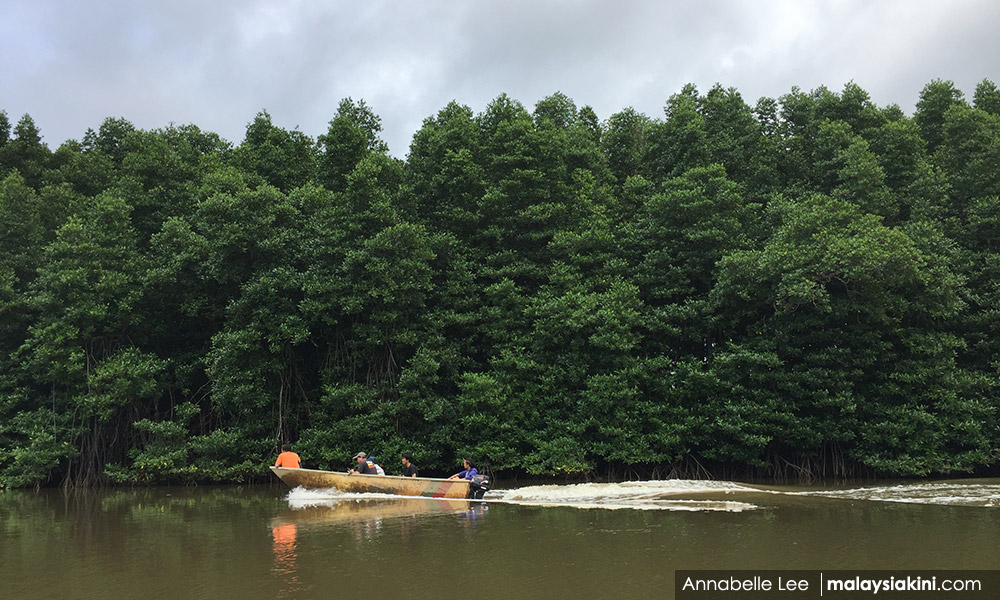
With climate change bearing down on the tropics, the search is on for a more sustainable way of getting food from the sea, one that doesn't take more than nature can give.
Farther to the north on Borneo, an island divided among Malaysia, Indonesia and Brunei, villagers are raising sea cucumbers: curious-looking creatures resembling giant slugs that are typically braised and served with oysters, mushrooms and spring onions, or - if you're in Japan - thinly sliced, flavoured with wasabi and eaten raw.
These echinoderms, close relatives of sea urchins and starfish, may not appeal to every palate. But farming them has one of the lightest footprints of any form of food production, a reminder of the vast untapped global potential for harvesting oysters, mussels, clams and many other types of filter-feeders.
A couple of hours' drive from the Sunlight Seafood shrimp farm, inhabitants of the stilted village of Mapan Mapan have created a maze of sunken enclosures fenced with a barnacle-covered mesh. Immersed waist-deep in one of these briny paddocks, sea-cucumber farmer Astinah Jamari plucked one of the sandpaper-skinned creatures from the seabed. It responded by squirting her with a jet of saltwater - a defence normally used to scare away crabs.
A revolution in fish
Forty years ago, only five percent of the world's fish production was farmed. After decades of rapid growth, aquaculture reached a tipping point in 2013, according to the UN Food and Agriculture Organisation, when the amount the industry raised in cages, tanks and ponds outweighed the tonnage of freely swimming fish hauled from lakes, rivers and seas for people's plates.
In many respects, the industry has a good-news story to tell. Farmed salmon, for example, can convert feed into edible protein far more efficiently than cows or pigs, while producing fewer greenhouse gases. Now, almost all the salmon sold in restaurants and supermarkets is raised in captivity, with Norway, Chile and Scotland the biggest producers.
But this phenomenal expansion has come at a cost. The appetite for farmed species is so voracious, almost 20 percent of the annual catch from the world's seas is ground into fishmeal, a nutrient-rich powder that forms the basis of the feeds used from salmon cages in Scottish lochs to shrimp ponds on Borneo. Vast amounts of fish have been taken from poorer countries to feed species destined for the plates of wealthier consumers. In addition, shrimp farms, in particular, have made coastal communities in the tropics even more vulnerable by cutting down mangroves, their first line of defence against extreme weather and rising sea levels.
Since the mid-1970s, the aquaculture industry has led to the destruction of more than 1.3 million acres of mangroves spread across Indonesia, Thailand, Vietnam, India, Bangladesh, China, Brazil and Ecuador, according to a 2013 paper in the Bulletin of Marine Science. Untreated waste and epidemics of shrimp-killing diseases mean the gains can be short-lived: A study published this year identified more than half a million acres of abandoned shrimp ponds in Indonesia alone.
Nevertheless, some governments in Southeast Asia and Latin America have concluded that it's worth sacrificing more mangroves in return for the export earnings and employment the projects can generate. Among them is the Malaysian state of Sabah, which is a partner in King Wong's shrimp farm.
Hopes of a better life
In 2013, representatives of Sunlight Seafood offered leaders of the Tombonuo and other indigenous communities a deal. In return for some of the land flanking the tidal creeks where their mangroves stood, locals recalled, the company would provide running water, electricity and much-needed employment for youths in the surrounding area, known as Pitas.
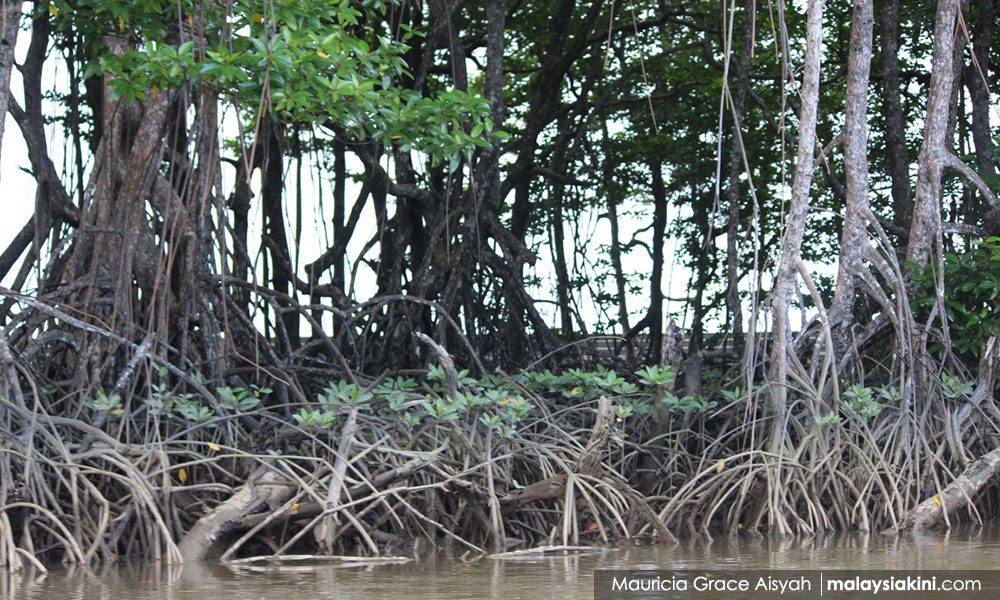
Five years since the bulldozers went to work, Tombonuo community leaders say they've lost more than 2,000 acres of mangroves and that the jobs and infrastructure they were promised haven't materialised.
"I have no words. It's like we've lost our whole world," said Samad Samayong, a Tombonuo elder, surveying a sacred outcrop consecrated by his ancestors that is now encircled by shrimp ponds. "We only realised what was happening when it was too late."
On the other side of a fence, a lone worker trudged past carrying a large bag of Royal Dragon brand shrimp feed on his shoulder. He didn't seem to notice Samayong and other Tombonuo watching from the trees.
Sunlight Seafood didn't respond to requests from Reuters for comment, made by telephone, email and a letter hand-delivered to its office in Kota Kinabalu, the capital of Sabah. Reuters also contacted a law firm in Kuala Lumpur that had acted for the company in the past, but received no reply.
Sunlight Seafood has issued statements to Borneo media saying the project was built on land long earmarked for aquaculture by government officials, and that it is boosting the economy in Pitas, one of the poorest districts in Sabah.
The sheer scale of the farm is only fully apparent from up close. In July, a Reuters reporter and photographer accompanied Samayong, Bondien and others on a three-boat party to various points where water from the ponds gushed from pipes, leaving foamy trails of scum in the creeks.
It took hours to trace even a portion of the fence enclosing the site. The barrier's stark edges cut a jarring contrast to the tangle of mangrove roots straddling saltwater and land, their branches home to proboscis monkeys, pig-tailed macaques, blue-eared kingfishers and storks.
The Sabah Environmental Protection Association, a non-governmental organisation, says Sunlight Seafood has already cut down 2,300 acres of mangroves, citing satellite imagery.
"They cleared the mangroves with no proper consultation with the community," said the group's president, Lanash Thanda. "They have to redress the wrong they have done."
Apart from losing more trees, Samayong and Bondien fear diggers will further encroach on their ancestral shrines, such as an eerie riverbank guarded by a spirit husband and wife.
Visiting on his boat, Bondien dedicated a cigarette he had rolled from mangrove bark to the couple, placing it on an altar made of branches.
"It's not only the forest that's being destroyed," said Mastupang Somoi, another member of the Tombonuo. "It's our identity."
Trees provide buffer
With evidence mounting that mangroves represent an effective buffer against climate impacts, some tropical countries are starting to question the gusto with which they once felled the trees, which can take 15 years to mature.
Were it not for the way mangroves served as shields, the 2004 Indian Ocean tsunami could have taken many more than 220,000 lives. The trees can also help mitigate the impact of rising sea levels: Their multi-tiered root systems trap sediment to raise the land around them relative to the encroaching waves.
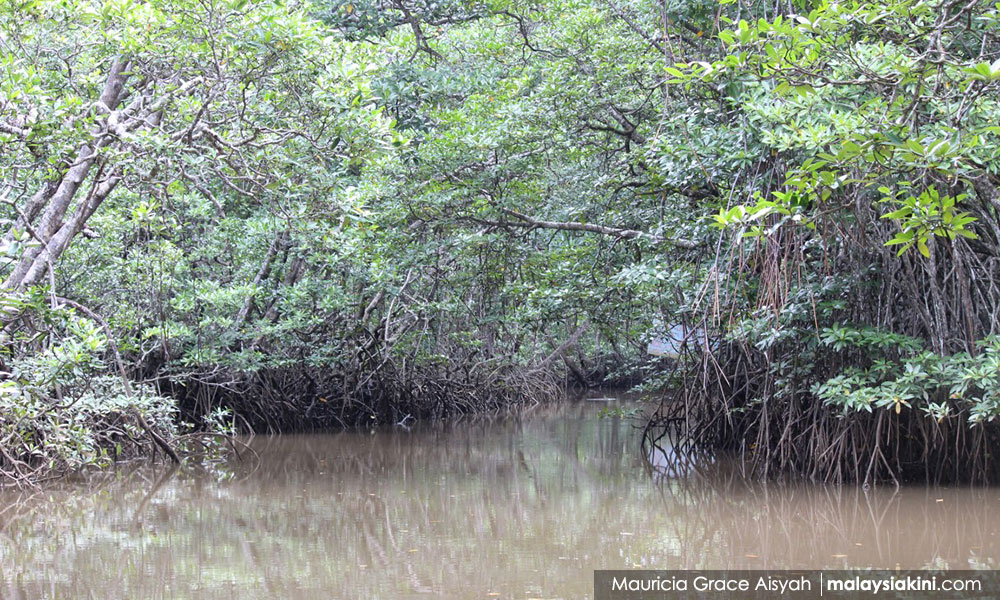
Equally ingeniously, mangroves sequester more greenhouse gases than almost any other type of forest, as well as serving as natural larders of fish, birds, fruit and the kind of snails you can eat raw by snapping their conical shells and sucking out the innards.
"If you catch a fish in the open sea or off a coral reef, it may well have spent part of its life in the mangroves," said Dan Friess, an associate professor of geography at the National University of Singapore.
Sabah's government says it is committed to striking a balance between economic development and preserving Borneo's extraordinary natural heritage, including by designating extensive areas of forest as nature reserves for threatened orang utan and creating Malaysia's largest marine protected area.
Earlier this month, Junz Wong, Sabah's agriculture minister, toured the Sunlight Seafood farm and said the company had operated "quite professionally" and created nearly 400 jobs. On his Facebook page, Wong said he had rejected a company request to cut down an additional 1,000 acres of mangroves. "I told them NO," he wrote. "No more destroying of mangroves."
In July, a Reuters reporter visited Sunlight Seafood's offices in a suburb of Kota Kinabalu and hand-delivered a letter summarising the Tombonuo community's grievances and requesting an interview with owner Wong or another company representative.
While the reporter was explaining the purpose of the letter to a worker, who had been sent to meet him at the door, a security guard cut their conversation short and escorted the reporter off the premises. The guard then closed the gate to the driveway. It bore a large sign in red letters warning that trespassers would be prosecuted.
Food without a face
Nestled in sea-cucumber farmer Jamari's palm, the specimen she had fished from the seabed convulsed with a slow-motion shudder. Once a struggling single parent, Jamari says the creatures came to her rescue, earning her enough money to put
her five children through school and build a new house.
"The sea cucumbers are my treasure chest," she said. "I can't even imagine what life would be like without them."
Mapan Mapan has earned so much money from its sunken farms that it has declared an annual sea cucumber "birthday" festival, at which villagers give thanks by stewing a share of their harvest in a communal meal.
Chinese traders have been importing sea cucumbers for more than 1,000 years. Served at royal banquets, they were considered both a status symbol and an aphrodisiac. A Ming Dynasty book published in 1602 called "Miscellanies of Five Items" lists them as "sea ginseng".
This mystique drives much of the appetite today. In the decade that ended in 2016, global production of sea cucumbers more than doubled to nearly 275,000 tonnes, according to the FAO.
At top Chinese restaurants, the echinoderms are used to make one of the world's most expensive soups, a broth called "Buddha Jumps Over the Wall", which can sell for US$400 (RM1,673) and needs to be ordered five days in advance.
Irwin Wong is a manager at Oceandrive, a Malaysian seafood company that buys the sea cucumbers for export. He served as an advisor when Mapan Mapan started cultivating the creatures eight years ago in a 20-farmer pilot project backed by the local government. He says the scheme is harvesting wild sea cucumbers at a sustainable rate, but that even better management could help Borneo produce many more.
"Perhaps this is the lowest impact of all aquaculture activities," Wong said, standing on a platform overlooking a planned new phase, to be built with barnacle-proof mesh and more durable epoxy-coated stakes. "It can seriously go very big."
Researchers believe there is enormous potential to scale up global production of plankton-eaters such as scallops, clams, oysters, cockles and other bivalves - and, of course, sea cucumbers.
"The current way of feeding ourselves is simply not sustainable," said Sebastian Ferse, an ecologist at the Leibniz Centre for Tropical Marine Research in Bremen, Germany. "I think on a global level we have to start thinking about the lower levels of the marine food chain, such as bivalves, when it comes to supplying our proteins."
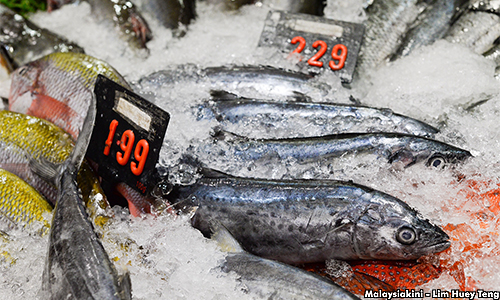
Scientific advisers to the European Union agree. They concluded last year that it should be possible to harvest a combined 165 million tonnes annually of bivalves and seaweed - almost double the world's annual landings of wild-caught fish.
The beauty of these creatures is that, unlike farmed fish or prawns, they don't require any feed, apart from the nutrients they absorb from the sea. No mangroves have to be felled to culture them. Neither do they spew tons of fish waste or chemical pollutants. In fact, bivalves actually remove toxins from the water; a single oyster filters 50 gallons of seawater a day.
Yet even as the risks posed by climate change bring the potential of shellfish, seaweed and sea cucumbers into sharper focus, it is also putting them in danger. As oceans absorb carbon dioxide released by burning fossil fuels, seawater is rapidly becoming more acidic. There is already evidence that acidification can make mussels' shells more brittle, or weaken their grip on rocks, leaving them at greater risk of being swept away by advancing waves.
'We need to preserve every species'
Life has been kind to the prize specimens at the Borneo Marine Research Institute: mammoth tropical fish known as giant grouper, which can weigh as much as a person, and in some cases have been swimming in spirals in silo-like tanks for almost 20 years. The only drama happens at feeding time. When fresh sardines hit the surface, the fish dart through the water with torpedo force.
Their wild relatives will have to work a lot harder to survive. In experiments to simulate the effects of more acidic waters, the institute has found that grouper - a staple in the Coral Triangle - find it harder to reproduce, and their young don't develop properly. The findings have sharpened concerns about what climate change will mean for the region's marine life, already struggling with plastic pollution, the runoff from oil palm plantations, damage to reefs by dynamite fishing and the loss of mangroves.
Shek Qin, a research assistant, visits the busy fish-landing quay at Kota Kinabalu two nights a week to monitor catches of sharks and rays. In the early hours of a July morning, she picked up a newly landed shark by its tail, plonked it onto the dock and cheerfully inserted her forefinger into its mouth, peering inside to inspect the teeth - a trick for classifying a specimen more accurately, especially if fishermen have lopped off the fins.
"It's a whole food web: If one species is declining, others will get affected too," Qin said, cradling a recently deceased hammerhead. "That's why we need to preserve every species of fish."
Near the fence surrounding the Sunlight Seafood shrimp farm, villagers Bondien and Samayong moored their flotilla under some mangrove trees and cast lead-weighted hooks. Samayong's daughter Ida remembered her grandfather regaling her with tales of the monster fish of his youth: notably, a ray he once caught that was bigger than his boat. But that day, nothing came to nibble.
"You used to be able to catch a fish here in 10 minutes," said Bondien, his line slack in the water. "Now, even if you have good bait, you can wait an hour and get only one - or maybe nothing." Around a bend in the river, an empty bag of Royal Dragon feed had become snagged in some mangrove branches. It was emblazoned with an image of a shrimp.
- Reuters

